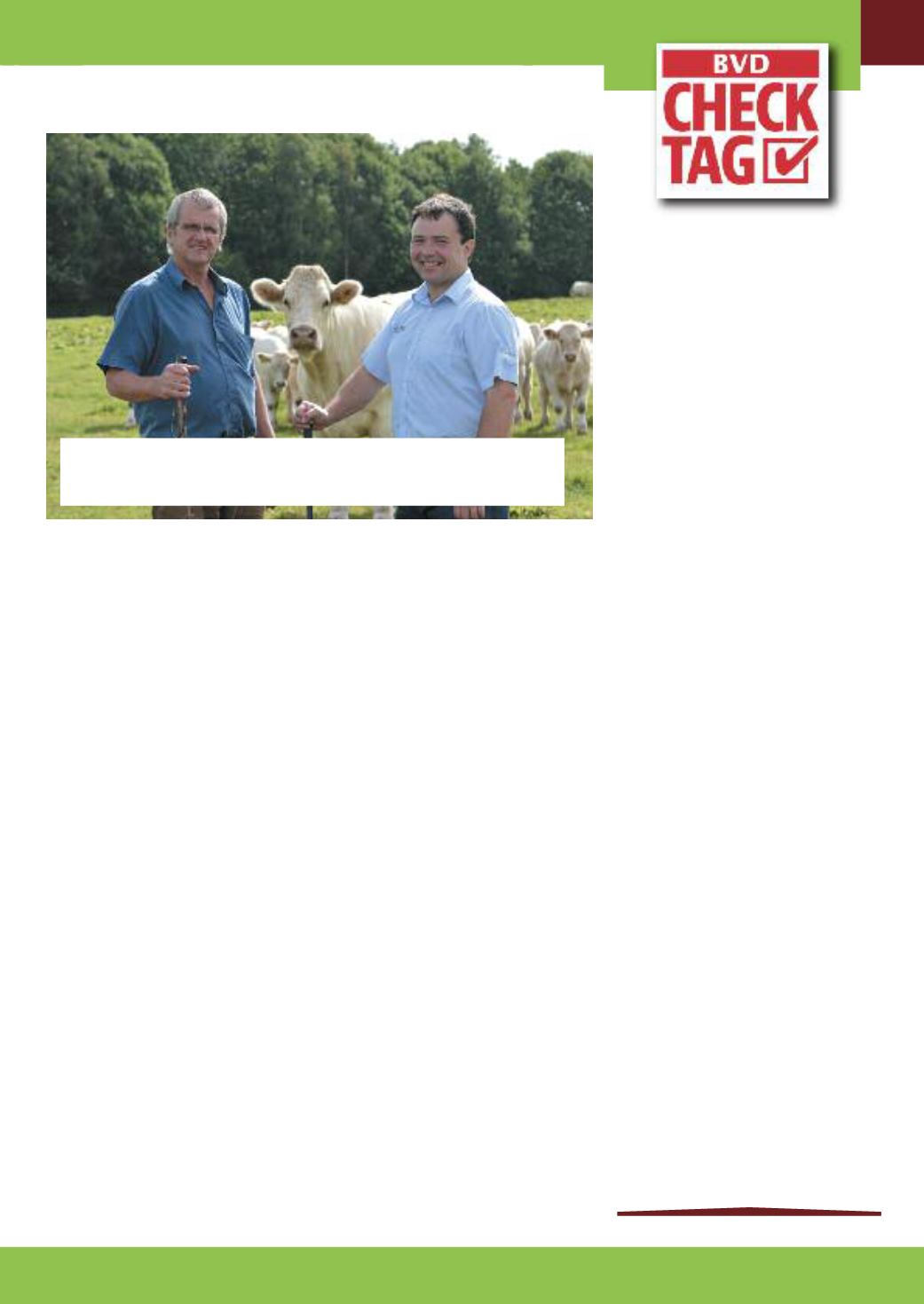
LIVESTOCK MATTERS - BVD SUPPLEMENT
heifers before they go to the bull.
“Vaccination is a highly effective tool,”
adds Dominic Alexander, “but it must
be carried out alongside diligent
biosecurity and check testing within
the herd. If all animals going into the
breeding herd are tested – including
bulls, bought-in replacements and
homebred replacements – and all new
born calves are tested, then you can
be confident that you have BVD
under control.”
Benefits begin at home for high
health status herds
For the pedigree Charolais herd of
Clifton Park Farms near Tenbury Wells,
owned by J.M. Robinson, high health
status is firstly important for
maintaining performance at home,
with any benefits in terms of boosting
the value of breeding stock at sale
being secondary.
As herd manager Paul Burgess explains,
the key is to monitor the health status
of all breeding stock and maintain
effective biosecurity and vaccination
protocols, particularly in relation to
infectious diseases such as BVD, IBR,
leptospirosis and Johne’s.
“We are members of the Premium
Cattle Health Scheme run by SRUC and
work closely with Belmont Vets in
monitoring our youngstock and
maintaining routine vaccinations,” he says.
“All our youngstock are blood tested
for BVD and IBR at 12 months of age
and at the moment all our adult cattle
are vaccinated against BVD and
leptospirosis. We are currently assessing
risk factors and considering including
IBR vaccination for our breeding females
“The only stock that we buy in are
stock bulls, and these are placed in
isolation until we have the results of
blood tests confirming their high health
status. We aim to keep bought-in bulls
well away from any other cattle on the
farm for a month, just to be sure we
are not introducing any
infectious diseases.”
The 40-cow pedigree herd, operating
under the Cliftonpark and Shamleys
prefixes, is managed in two distinct
calving blocks in autumn and spring.
The main breeding stock that are sold
are pedigree bulls, either through
private on-farm transactions or through
pedigree sales held at various breed
society sales. Bulls from the herd are
often attracting prices of £4,000 -
£5,000.
“Maintaining high herd health status is
more about how it benefits our own
performance,” he adds. “We first
started to look hard at potential
problems like BVD when assessing the
impact these diseases can have on
susceptibility to other challenges, and
specifically bovine TB. We are in a TB
area and by keeping BVD and other
challenges at bay we believe we are
better protected.”
Dominic Alexander is certainly in
agreement, and says the overall
approach taken at Clifton Park Farms
is one that the majority of herds
would see benefits from.
“When a herd has BVD circulating
there is likely to be a reduced
immune response in affected cattle,”
he explains. “This is likely to leave these
cattle more susceptible to other disease
challenges such as scours, pneumonia
and bovine TB.
“At Clifton Park Farms, a lot is being
done to protect the breeding herd, and
that will be paying dividends across
the board.
“One additional step that can be taken
is to ear tag tissue test calves when
they are born, as this provides an
additional way to check the status of
the mothers. If calves are identified as
PIs for BVD, for example, cows can be
blood tested before they are put back
in calf. A new tissue sampling service,
available as part of XLVets’ BVD CHECK
TAG initiative, is certainly a very positive
step forward and something that will
firstly encourage testing and secondly
raise awareness of BVD in particular,”
concludes Dominic.
Herd manager Paul Burgess (left) is working closely with his vet
Dominic Alexander of Belmont Vets to maintain high health status
in the pedigree Charolais herd at Clifton Park Farms.


